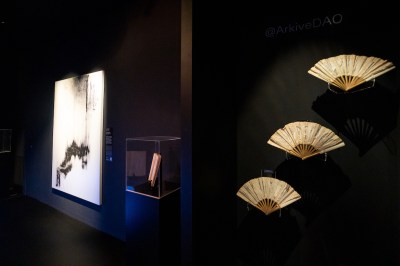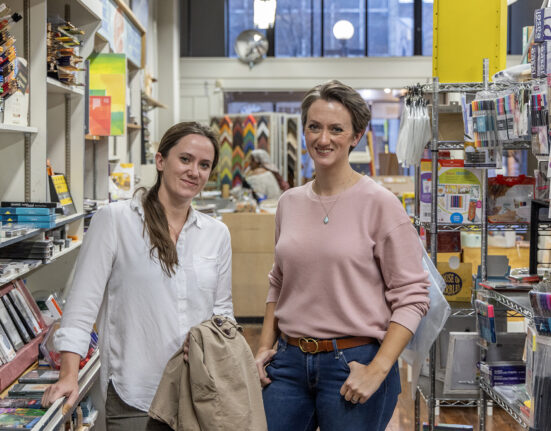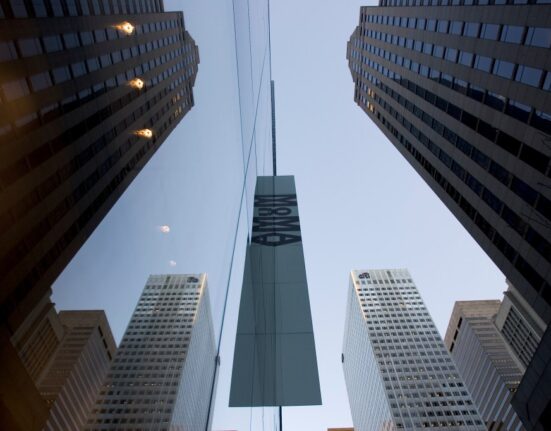Editor’s Note: This story originally appeared in On Balance, the ARTnews newsletter about the art market and beyond. Sign up here to receive it every Wednesday.
With the major May auctions around the corner, the Art Business Conference has landed in New York for the first time since before the pandemic with a full slate of panels that examine the state of the art market and art finance. Back in spring 2020, a new trend was on the rise: firms that put artworks into securitized funds for fractional ownership investment.
The 2023 conference opens today in a very different financial environment that sees those same firms in rocky waters.
The Art Business Conference was founded in 2014, just as collectors started to dip their toes into using art as collateral for loans, the precursor of the fractional funds. Four years later, Deloitte estimated that that sector was worth $20 billion. In May 2020, Morgan Stanley analysts released a wide-ranging report on how artworks could be used as financial vehicles: they could be placed in trust to shield fortunes from inheritance taxes (as Succession cheekily referenced with its recent nod toward “investment impressionism” after a certain character’s untimely death); or they could be used as collateral for loans. In 2021, Bank of America, Goldman Sachs, and JPMorgan reported growth in their art loan businesses up to 30 percent over the previous year.
The Morgan Stanley report also gestured to the new area of securitized funds, but it took the pandemic to rev that up. In the following months, booming tech stocks, low interest rates, and a rise in disposable income fueled a series of bubbles in alternative assets, namely cryptocurrencies, NFTs, and so-called “meme-stocks.” But newer fintech players splitting equity in artworks among retail investors also saw their growth supercharged.
The best-known firms, Yieldstreet, Mintus, Masterworks, and Securitize, each have slightly different business models, but they all promise to unlock art’s investment potential to a population beyond the elite collector class. In 2021 Masterworks raised $110 million in a series A funding round, Yieldstreet raised $100 million in series C funding, and Securitize raised $48 million in its series B capital round.
This past January, however, the financial papers of record declared the end of “cheap money,” as central banks ended a period of ultralow interest rates and quantitative easing that defined the global economy of the last 15 years. Now, with global interest rates hiked and inflation running high, there are far higher barriers to attracting investors to alternative assets.
As ARTnews reported in December, Masterworks used its sizable cash runway to purchase more than $450 million worth of paintings, while cutting over two dozen employees as it struggled to reach ambitious sales targets. Former staffers revealed that the cost of netting retail investors was an ongoing challenge. Mintus has faced a similar hurdle, an anonymous source familiar with the company’s business strategy told ARTnews. A more restrictive regulatory environment in the United Kingdom, where Mintus is based, forced it to pivot from retail to institutional investors and family wealth offices. The cost of marketing to regular investors while adhering to regulatory standards was too high in the face of a prospective recession, the source said.
Vedat Mizrahi, Mintus’s CFO and chief economist, told ARTnews that the company’s focus is on “mass affluent” individuals, an industry term used to describe those with at least $100,000 in investable assets. “We have always been of the view that mass retail is not the right client category to target for alternative assets due to the complexity and relatively more illiquid nature of the asset class.”
Yieldstreet, which bills itself as an alternative investment platform and has funds in real estate, law, and art, cut at least two employees from its small art-focused division, Athena, according to former employees, speaking on the condition of anonymity. Athena launched a series of art equity funds last year. Its fourth fund, launched last May, holding works from Ed Ruscha, Cy Twombly, and Sol LeWitt, among others, has yet to be fully bought into nearly a year later. A former Yieldstreet employee familiar with the funds told ARTnews that the weak selling is a sign the company and its peers have yet to bounce back from a dip in investor interest that began last summer. (A Yieldstreet spokesperson declined to comment on the extent of the layoffs.)
A wealth adviser based in Florida whose firm has researched and invested in fintech companies told ARTnews that “cheap money” fueled a surge of interest in “exotic alternatives.” But the current economic environment has squelched that trend. “When traditional asset classes get really stressed, that’s when things start to break in the rest of the financial market,” he said.
Meanwhile, at a Bloomberg panel last month, Sotheby’s European chairman Oliver Barker questioned the viability of fractional art investment companies in the new economic climate. “I haven’t yet seen one painting that’s been sold privately since acquisition by a fund like that for a major profit,” Barker told the panel.

Arkive DAO installation at Art Basel Miami Beach 2022
Some of the companies seem not to be denying the situation. A Yieldstreet spokesperson told ARTnews the company recently issued “a number of cost-cutting initiatives” consistent with “the current market backdrop,” and did not refute the assertion that its art equity funds were seeing lower interest, but did say Yieldstreet was betting on “continued” interest in alternative assets. Those assets, the spokesperson said, bring returns “even during stock market crashes, recessions, and wars.” Meanwhile, Mizrahi said Mintus has “been anticipating a decline in the retail investor appetite as the central banks signaled tightening and interest rate hikes.” The dissenting voice was Masterworks, whose spokesperson, Matt Sutherland, told ARTnews that the company has not been affected by the retail climate and that it “continues to see strong growth with retail investors.” The company expects capital raising to grow at least 50 percent in 2023. “Our view is that investors who are serious about art investing are coming to us versus smaller players,” Sutherland said.
It is worth noting that, in terms of finance as a whole, these companies are small players in a widening landscape where all kinds of special assets are being fractionalized. An internal document from a midsize New York investment firm reviewed by ARTnews showed Masterworks, Mintus, and Yieldstreet among the more than 50 such early-stage fintech companies with funds it was monitoring for “curated venture capital investment opportunities.”
And even amid the chillier environment, art continues to be a magnet for finance’s new instruments. Case in point: Decentralized autonomous organizations (DAOs), online social clubs that are often venture-backed, where investors collectively govern funds through various blockchain mechanisms.
Last summer, Web3 start-up Arkive launched with $9.7 million in funding and a promise to “decentralize the museum.” While structured as a DAO, Arkive describes itself as a lending institution. It crowdsources its member-investors for funds and direction on what to acquire, and then brokers loans of art and ephemera to private and public spaces.
But while founder and executive director Tom McLeod has often pitched Arkive as “artist-centric,” he told Hub Culture Davos in January that Arkive wants to be a vehicle for investors and a means of aggregating creative types as art advisers. He seemed to be imagining Arkive as an asset manager, while arguing that its structure could solve a problem at the heart of using art as an asset class: how to know what to buy.
“It’s an opportunity to put your capital or a family office’s capital to work in alternative assets,” McLeod said in January. With “thousands of people” working to advise on an acquisition, he said of investors, “you’re getting a ton of edge.”








